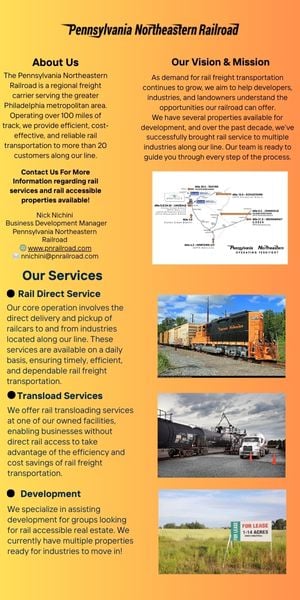Navigating Construction Risk in Uncertain Times

Getting back to basics can solve problems before they appear.
Most developers have been dealing with once-in-a-generation construction problems for the past 18 months. From delays, to material escalations, to labor shortages — the list of woes seems endless.
Amid the uncertainty created by the COVID-19 pandemic, it won’t come as a surprise that construction hard costs are much higher than previous years. Project schedules are at the mercy of manufacturers, and the ongoing supply chain challenges are impacting material availability and distribution on a global scale. With so much uncertainty, what can owners and developers do to responsibly mitigate risk and give their projects the best chance of success?
It is not feasible to anticipate and prepare for every potential scenario or outcome within complex systems. Instead, it is critical to focus on the fundamentals — the easily controllable elements of the process that, if addressed, can consistently result in successful outcomes.
There are countless examples of experts in every field taking time to ensure they are still executing the basics of their craft with excellence. That’s why professional football coaches continue to run players through simple blocking and tackling drills. The development and construction of commercial real estate is no different.
Real estate magnate Steve Wynn highlighted the importance of going back to basics in a December 2007 interview with Esquire magazine.
“If you don’t have a voice that forces you back to basics … you’re at risk, and the people with you are at risk,” he said. “I’m not a daredevil. I don’t fly without a safety net.”
Construction Risk Management: The Basics
Construction risk management is a broad and nuanced field. Most owners or developers of commercial real estate likely have neither the time nor the inclination to contemplate every line of contractual language that they are agreeing to — whether in an insurance policy or in a contract with a builder. They likely don’t have specialized training to perform a forensic schedule delay analysis. (According to a March 2017 newsletter from the Smith Currie law firm, a forensic schedule delay analysis “is the study and investigation of events … to establish the cause and extent of delays and to resolve construction delay claims through negotiations or legal proceedings.”)
Owners and developers focus on getting their projects finished — on time and under budget. So, what are the basics of risk management that they should focus on?
While there are many things that impact a construction project’s success, including good leadership and other human factors such as trust, open communication, transparency and accountability, there are several concrete best practices in risk management that owners and developers should implement to protect their interests. These best practices can be boiled down to three attributes necessary to give a project the best chance of success — a clear plan at the beginning, a robust construction contract and a disciplined approach to project documentation.
A Clear Plan
It is difficult to overstate the importance of taking time to develop and document a clear understanding of the project plan prior to beginning construction. Discussion and documentation of the facts available and assumptions used to develop the baseline schedule, budget and contractual scope gives a developer the tools to accurately analyze claims by a contractor throughout the project for extensions of time, requests for additional funds and possible changes in the scope of the project. (According to the Project Management Institute’s “Guide to the Project Management Body of Knowledge,” managing the scope of a project “is primarily concerned with defining and controlling what is and is not included.”)
In addition to the benefits of having a well-documented baseline against which to assess future claims, the process of discussing the schedule logic, material procurement and scoping assumptions provides an owner/developer the opportunity to fine-tune their project and trim out any potential areas of excess spending that may have gone unnoticed.
A Robust Construction Contract
A common idea taught by motorcycle safety instructors is that a rider should always dress for the crash, not for the ride. This same principle applies to construction contracts.
The primary piece of advice is to engage with legal counsel that can review the contract and provide recommendations on language that will protect the developer/owner while remaining fair to all parties in the agreement.
In response to the specific challenges seen throughout the industry today, pay special attention to several subsections of the contract including clauses related to force majeure, material escalation, delay claims or time impact analysis requirements, liquidated damages, and duty to mitigate delay.
Robust language throughout the construction contract acts as the helmet and leather padding in the event of a contractual dispute and provides the development team with a clear path to recourse and recovery of damages.
A Disciplined Approach to Project Documentation
At this point, developers and owners should have a clear picture of the project plan prior to the rubber meeting the road. Ideally, there is a robust construction contract that provides protection in the event a dispute arises during or after the project. Next, it is critical to maintain a steady course throughout the construction phase of the project.
During this phase, it is important to keep thorough and consistent records of what is happening on the project site. These records include schedule updates, status reports, meeting minutes, progress pictures, and any official correspondence such as letters of notice. One best practice is to follow up any verbal discussions with an e-mail or similar form of permanent record that can be referenced in the future. This helps avoid getting into a dispute regarding the barely remembered details of a phone call that took place several months in the past.
Another best practice is to create a new “issue” folder within the company’s filing system as soon as there is an inkling that a potential impact to the project is bubbling up. Save all contemporaneous documentation related to that topic in real time, with the date in the file name. This will create a chronology of any issues that do bubble up to the surface and also serves as a great refresher in case several weeks or months have passed since you last thought the issue was resolved.
Pulling it All Together
In summary, the blocking and tackling of construction risk management for owners and developers comes down to clear communication from the start; thorough, but fair, contractual protection; and a high level of documentation throughout the project.
While these fundamentals cannot guarantee that a project won’t experience bumps along the way, they will certainly create a much stronger position in the event a dispute does arise.
Chase Callaway is director of construction with Intersect Development Group.








